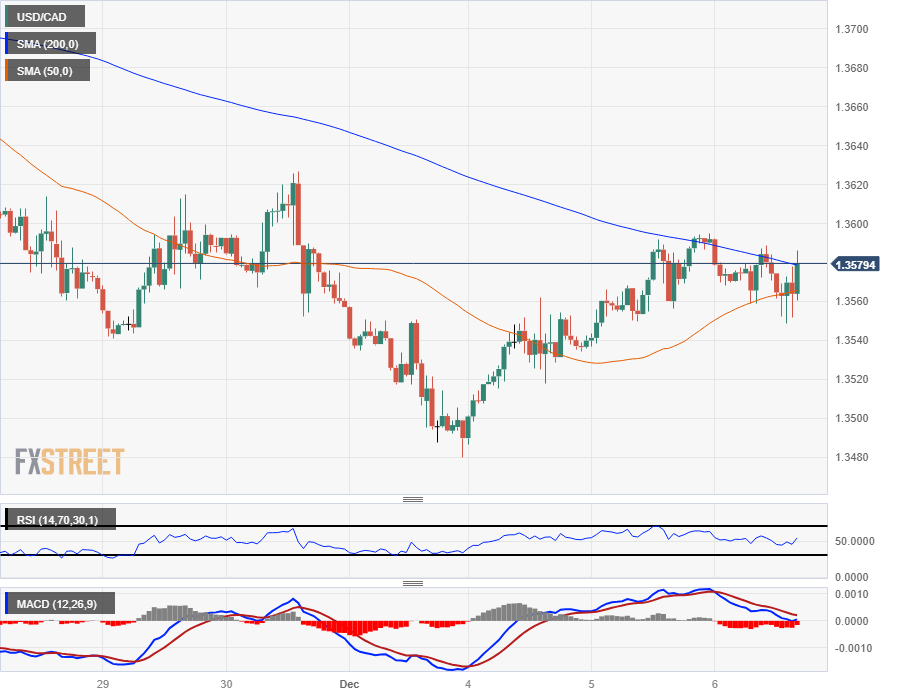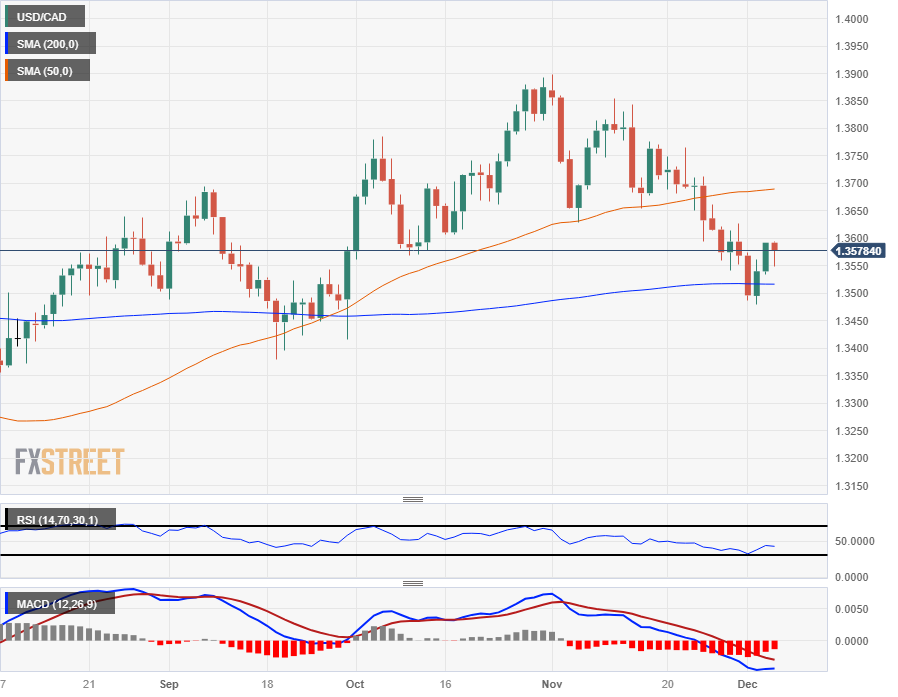Canadian Dollar struggling to hold onto gains after BoC holds rates at 5%
- The Canadian Dollar is on the rise on Wednesday, looking to recover lost ground.
- The BoC held rates at 5% as the markets broadly expected.
- The CAD is in the green against the Greenback on Wednesday, but still down for the week.
The Canadian Dollar (CAD) is squeezing out some gains on Wednesday, but struggling to make headway after the Bank of Canada (BoC) decided to hold its benchmark interest rate at 5%, in-line with market expectations. The CAD is seeing a step up against most of the major currency blocs but still remains down against the Antipodeans and is flat against the Swiss Franc on the day.
The Bank of Canada (BoC) held rates steady for the third straight meeting in a row, leaving enough hawkish wiggle room on the table to warn that further rate hikes would follow if inflation risks increase.
Daily Digest Market Movers: Canadian Dollar stretches for more after BoC rate hold
- The Canadian Dollar is on the move against the US Dollar, looking to recover ground after getting pushed lower against the Greenback in the early week run-up to the BoC’s rate call.
- The BoC held its benchmark rate at 5% just as markets expected.
- The Canadian central bank also cooled its hawkish rhetoric, paring back statements about inflation risks and keeping the focus on easing price pressures.
- The BoC left some hawkish statements on the table, reiterating that rates can and will go higher if inflationary pressure returns.
- BoC Statement: “Governing Council wants to see further and sustained easing in core inflation, and continues to focus on the balance between demand and supply in the economy, inflation expectations, wage growth and corporate pricing behaviour.”
- US ADP Employment Change figures missed the mark on Wednesday, introducing some jitters into USD-based currency pairs.
- The US ADP Employment Change for November showed 103K new jobs added to the US economy, below the forecasted upswing to 130K and falling back from October’s 106K (revised down from 113K).
- US Initial Jobless Claims for the week of November 24 will be the notable data release on Thursday before markets round the corner into Friday’s US Nonfarm Payrolls (NFP).
Canadian Dollar price today
The table below shows the percentage change of Canadian Dollar (CAD) against listed major currencies today. Canadian Dollar was the strongest against the Euro.
| USD | EUR | GBP | CAD | AUD | JPY | NZD | CHF | |
| USD | 0.07% | 0.04% | -0.08% | -0.22% | 0.01% | -0.36% | -0.09% | |
| EUR | -0.06% | -0.01% | -0.14% | -0.27% | -0.05% | -0.41% | -0.14% | |
| GBP | -0.05% | 0.01% | -0.13% | -0.27% | -0.04% | -0.41% | -0.14% | |
| CAD | 0.09% | 0.17% | 0.13% | -0.14% | 0.10% | -0.27% | 0.00% | |
| AUD | 0.22% | 0.27% | 0.27% | 0.13% | 0.23% | -0.11% | 0.14% | |
| JPY | 0.00% | 0.08% | 0.04% | -0.09% | -0.24% | -0.37% | -0.10% | |
| NZD | 0.36% | 0.41% | 0.42% | 0.25% | 0.14% | 0.35% | 0.27% | |
| CHF | 0.09% | 0.16% | 0.14% | 0.01% | -0.13% | 0.10% | -0.27% |
The heat map shows percentage changes of major currencies against each other. The base currency is picked from the left column, while the quote currency is picked from the top row. For example, if you pick the Euro from the left column and move along the horizontal line to the Japanese Yen, the percentage change displayed in the box will represent EUR (base)/JPY (quote).
Technical Analysis:
The Canadian Dollar (CAD) is marginally higher on Wednesday, only losing ground against the Aussie (AUD) and the Kiwi (NZD) for the mid-week market session. The CAD is up around a tenth of a percent against the US Dollar (USD) on the day, dragging the USD/CAD back into familiar chart territory near 1.3550.
The USD/CAD gained ground in the early week, taking the pair from opening bids near 1.3495 directly into the 200-hour Simple Moving Average (SMA) just below the 1.3600 handle.
The Canadian Dollar is in the green for the week against everything except the safe havens. Despite the Loonie’s bid on Wednesday, the USD/CAD still remains down around half a percent from Monday’s opening bids.
USD/CAD Hourly Chart

USD/CAD Daily Chart

Bank of Canada FAQs
The Bank of Canada (BoC), based in Ottawa, is the institution that sets interest rates and manages monetary policy for Canada. It does so at eight scheduled meetings a year and ad hoc emergency meetings that are held as required. The BoC primary mandate is to maintain price stability, which means keeping inflation at between 1-3%. Its main tool for achieving this is by raising or lowering interest rates. Relatively high interest rates will usually result in a stronger Canadian Dollar (CAD) and vice versa. Other tools used include quantitative easing and tightening.
In extreme situations, the Bank of Canada can enact a policy tool called Quantitative Easing. QE is the process by which the BoC prints Canadian Dollars for the purpose of buying assets – usually government or corporate bonds – from financial institutions. QE usually results in a weaker CAD. QE is a last resort when simply lowering interest rates is unlikely to achieve the objective of price stability. The Bank of Canada used the measure during the Great Financial Crisis of 2009-11 when credit froze after banks lost faith in each other’s ability to repay debts.
Quantitative tightening (QT) is the reverse of QE. It is undertaken after QE when an economic recovery is underway and inflation starts rising. Whilst in QE the Bank of Canada purchases government and corporate bonds from financial institutions to provide them with liquidity, in QT the BoC stops buying more assets, and stops reinvesting the principal maturing on the bonds it already holds. It is usually positive (or bullish) for the Canadian Dollar.


Comments are closed.